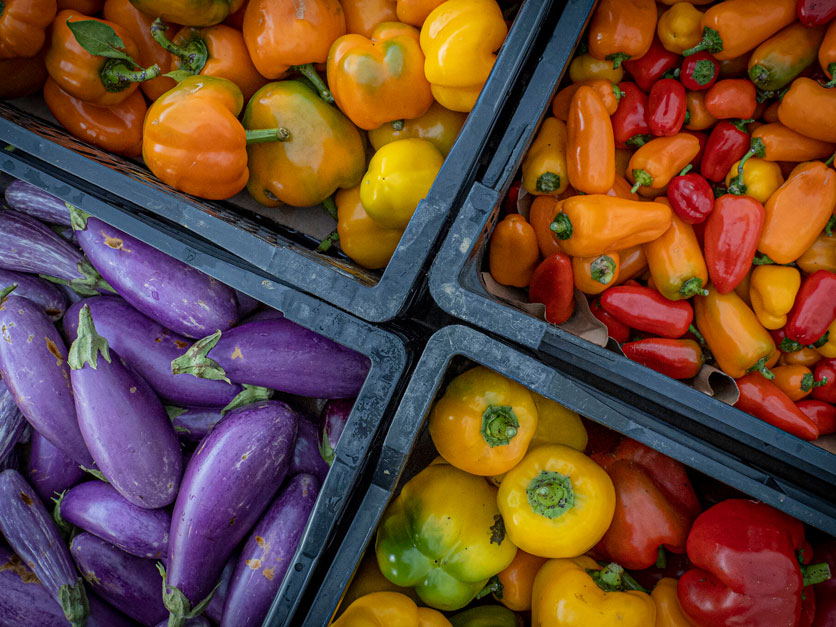A farm bill program that supports the production and marketing of fruits, vegetables, nuts and other crops swelled to $97 million last year, thanks to an influx of stimulus funding.
But lawmakers are being asked to expand eligibility for the Specialty Crop Block Grant program when the farm bill is up for reauthorization next year, and that worries some in the sector.
The program has typically distributed about $72 million each year and is still working out allocations for the current year (requests were due May 3).
USDA's Agricultural Marketing Service uses a formula based on acreage and total receipts from specialty crop sales to allocate funding to the 50 states and 6 territories. Then, the state departments of agriculture award grants to universities, nonprofits and other entities that work to improve specialty crops in their communities.
California receives by far the greatest allocation, at about $24 million most years. That expanded to nearly $32 million in fiscal 2021 thanks to the stimulus money. If a state or territory doesn’t seek, or can’t distribute, its full allocation, the unawarded dollars are then available to the other states/territories using the same apportioning formula.
After California, the next three largest awards in recent years went to Washington, Florida and North Dakota. The 10 smallest awards in 2019, to places including Alaska, Rhode Island, Guam and the US Virgin Islands, were under $300,000. With the boost from H.R. 133 (stimulus) in 2021, the smallest award, to the District of Columbia, was $323,000.
RJ Karney, the senior director for public policy at the National Association of State Departments of Agriculture, said “there's a strong vested interest across all of NASDA in this program.” NASDA is still working up its detailed priorities for the next farm bill, but already Karney says he knows the group will be pushing for increasing SCBG funding and expanding even further the flexibility states enjoy in awarding grants.
The California Department of Food and Agriculture uses its “agricultural vision” document, listening sessions with growers and other participants and feedback from technical reviewers in developing its priorities for grants, said Steve Lyle, a CDFA spokesman. In recent years, equity concerns have been folded into the process. Recipients have included university extension, commodity groups and community organizations supporting underserved farmers.
Looking ahead, Lyle said, “CDFA would encourage administrative changes that increase flexibility and ease the program’s burden for sub-recipients.” He added CDFA will work closely with NASDA in fine-tuning suggestions for program changes.
One significant 2018 farm bill impact that has not yet been fully integrated into the specialty crops program is the legalization of hemp.
Currently, AMS maintains a list of specialty crops that helps states determine whether something qualifies. A state agency can discuss with AMS if a certain item grown locally that is not on the list is eligible for the SCBG program. But for now, hemp is nonnegotiable. It’s considered a fiber crop. But with its myriad uses, NASDA supports including it in the list of eligible specialty crops when it is grown for horticultural purposes. That doesn’t sit well with everyone.
Looking for the best, most comprehensive and balanced news source in agriculture? Our Agri-Pulse editors don't miss a beat! Sign up for a free month-long subscription.
Dennis Nuxoll, vice president for federal government affairs with Western Growers, a large industry group representing specialty crops, says hemp growers are understandably looking for a farm bill home. But in an economic environment where farm bill funding could be flat, he’s concerned adding hemp into the existing pool of eligible specialty crop recipients will mean one pie is divided into more pieces.
 Dennis Nuxoll, Western Growers
Dennis Nuxoll, Western Growers
“Folks in the hemp community now want access to our programs,” he said. “That will be a big challenge for us as a community to deal with that, and in my opinion, to push back.” He said already there are worthy grant applications that don’t receive funding because the program can’t support everyone.
Hemp is not the only versatile plant in this sort of limbo, though. Karney offers sunflowers as another example.
“As an oil(seed) crop, they're deemed as ineligible,” he said. “But there's no guidance on whether they are eligible within the category of cut flower products.”
That’s a clarification NASDA could push USDA to make. But for now, Karney said, NASDA is still working out the details of its policy requests for the next farm bill. The group’s top priority, he said, is to make sure a “united” farm bill is passed “to provide certainty for farmers, for ranchers, for those who are affected by these programs.”
For more news, go to www.Agri-Pulse.com.

